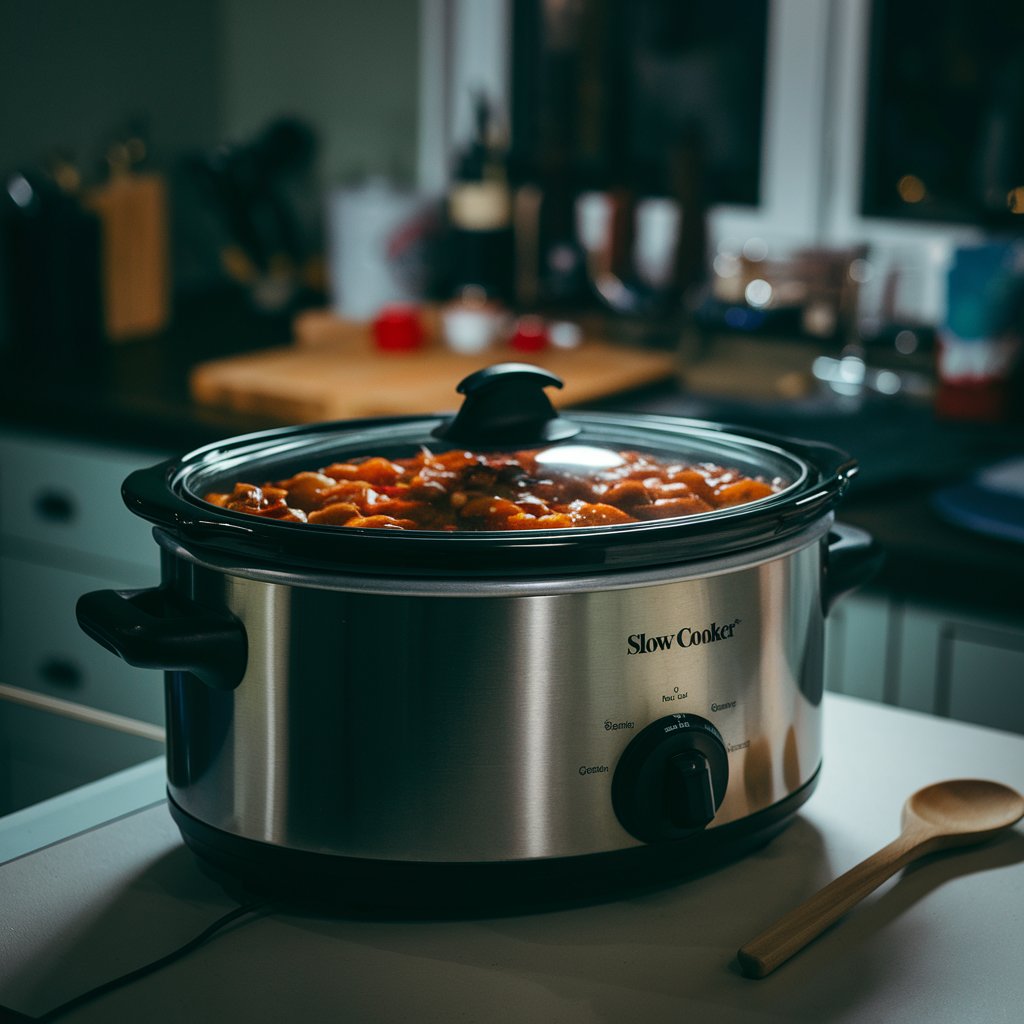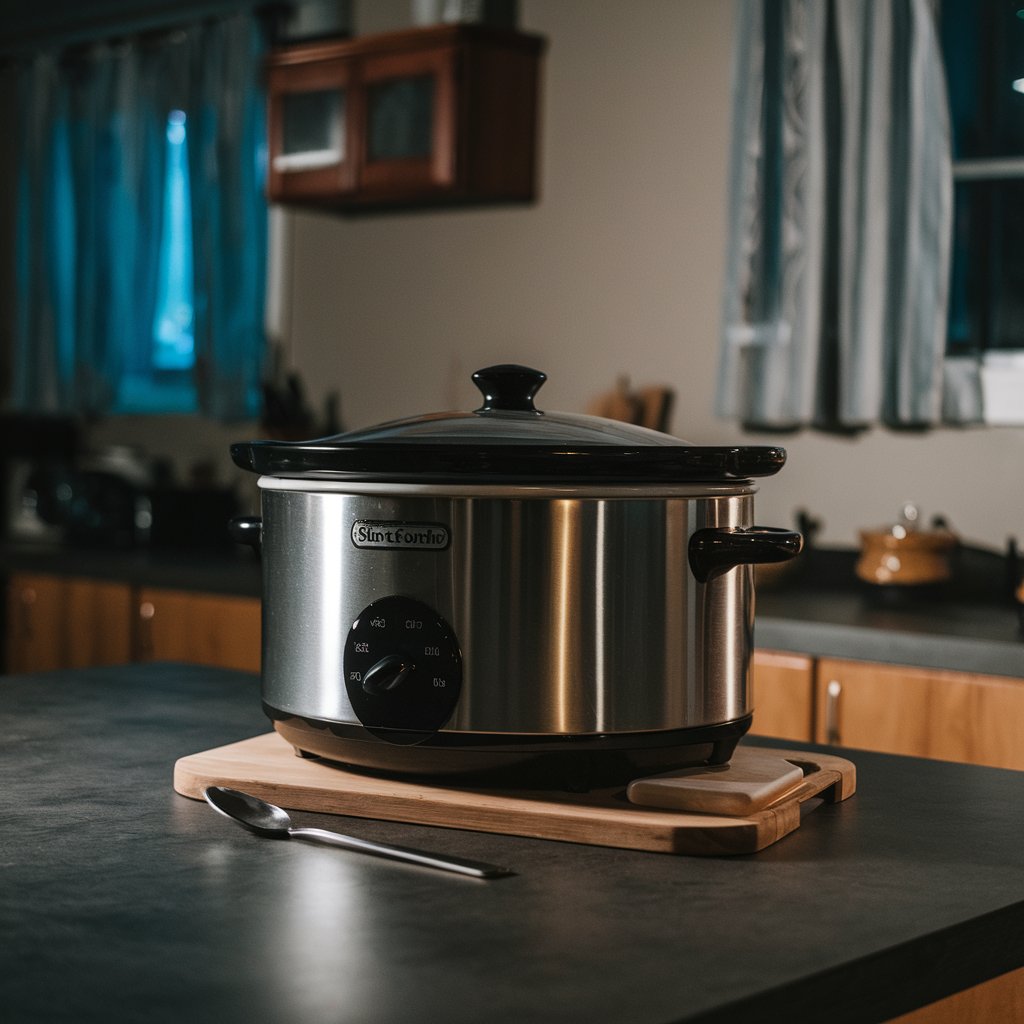Physical Address
304 North Cardinal St.
Dorchester Center, MA 02124
Physical Address
304 North Cardinal St.
Dorchester Center, MA 02124


Leaving food in a slow cooker overnight can be tempting, especially after a long day of cooking. But if you’ve ever wondered whether it’s safe to leave your meal unattended while you sleep, you’re not alone. Understanding the risks involved is crucial to ensuring your food remains safe and delicious.
When the slow cooker is turned off, the temperature drops, creating an environment where bacteria can thrive. It’s essential to know how long food can safely sit in this state before it becomes a health hazard. In this article, we’ll explore the best practices for storing food in your slow cooker and provide tips to keep your meals safe for your family.
Slow cookers are designed for convenient, low-temperature cooking that allows flavors to develop over time. Knowing how they function and their safety features helps ensure food remains safe for consumption.
Slow cookers utilize low, consistent heat to cook food over extended periods. Your food is enclosed within a ceramic or stoneware pot, which traps heat and moisture. Three primary temperature settings—low, medium, and high—allow flexibility in meal preparation. On the low setting, dishes cook typically over 6 to 8 hours, while the high setting usually reduces this to 3 to 4 hours. The gentle heat helps maintain the integrity of your ingredients, allowing for tender results without drying out.
Slow cookers come equipped with several safety features to protect against overcooking and overheating. Most models include a thermostat that automatically adjusts heat levels to maintain a steady cooking temperature. Additionally, many have a built-in timer that can switch the cooker to a ‘keep warm’ mode after the cooking cycle ends. This feature keeps food at a safe temperature for a limited time, minimizing the risks associated with bacteria growth. Following the manufacturer’s instructions and using these settings properly enhances the safety of meals prepared in slow cookers.
Leaving food in a slow cooker overnight can pose safety risks due to temperature fluctuations. Understanding these risks and following food safety guidelines helps ensure your meals remain safe to eat.
Leaving food in a slow cooker that’s turned off can lead to a dangerous temperature range between 40°F and 140°F, where bacteria thrive. Bacteria can double in number every 20 minutes in this temperature zone, increasing the risk of foodborne illness. Some key risks include:
To minimize safety risks when using a slow cooker, follow these guidelines:
Adhering to these practices helps maintain food safety when using a slow cooker.
Utilizing a slow cooker effectively ensures food safety and optimal taste. Follow these guidelines for best practices in cooking and storing food.
Use precise cooking times to prevent food from staying in the danger zone.
Monitor food doneness with a thermometer. Target internal temperatures of at least 165°F for safety, particularly for poultry and ground meats.
Storing leftovers correctly minimizes food safety risks.
Reheat leftovers thoroughly, reaching at least 165°F before consumption. Follow these storage practices to maintain the quality and safety of your meals.
For those concerned about leaving food in a slow cooker overnight, several alternative cooking methods ensure meal safety and quality. Explore these effective alternatives below.
Oven cooking provides a reliable option for preparing overnight meals. Set your oven to a low temperature, typically between 200°F and 300°F, to cook dishes like casseroles or roasts. Use a covered dish to retain moisture and flavor. Ensure that food reaches a safe internal temperature of at least 165°F before serving. Employing this method creates a controlled cooking environment, reducing the risk of foodborne illness while allowing for delicious overnight meals.
A rice cooker offers versatility beyond cooking rice. Most rice cookers have a keep-warm setting that maintains food temperatures above 140°F, minimizing bacterial growth. Cook grains, vegetables, or soups in your rice cooker, ensuring that the food remains hot and safe for consumption over several hours. Follow the manufacturer’s guidelines for optimal cooking times, and always check that food reaches safe internal temperatures before serving. This approach provides convenience while ensuring safety and quality in your meals.
Leaving food in a slow cooker overnight when it’s turned off isn’t safe. Bacteria thrive in the dangerous temperature range where food can spoil. To keep your meals safe and delicious, always follow food safety guidelines.
Utilizing the keep warm setting or alternative cooking methods can help you enjoy the convenience of slow cooking without the risks. Remember to refrigerate leftovers promptly and reheat them thoroughly before serving. By taking these precautions, you can ensure that your family enjoys nutritious and safe meals every time.

Leaving food in a slow cooker overnight is risky if the cooker is turned off. Once it cools down, the temperature can drop into the danger zone (40°F to 140°F), allowing bacteria to grow.
Food should not remain in a slow cooker for more than 2 hours after cooking if it’s turned off. On the ‘keep warm’ setting, food can stay safe for about 4 hours.
The danger zone for food safety is between 40°F and 140°F. In this range, bacteria can thrive and double in number quickly, increasing the risk of foodborne illnesses.
Refrigerate leftovers promptly in shallow containers to cool them quickly. Ensure that all leftovers are reheated to an internal temperature of at least 165°F before consuming.
For overnight meals, it’s better to use an oven set at low temperatures (200°F to 300°F) or a rice cooker that can maintain safe temperatures above 140°F, rather than relying on a slow cooker left unattended.
Most slow cookers have three main settings: low, medium, and high. Cooking times vary, with low typically taking 6 to 10 hours, medium 4 to 6 hours, and high 3 to 4 hours for meat and poultry.
Use airtight containers to store food and label them with dates for freshness. Make sure to keep raw and cooked foods separate to avoid cross-contamination while refrigerating.
Monitoring cooking temperatures helps ensure food is fully cooked and safe to eat, particularly for meats and poultry, which should reach at least 165°F to minimize the risk of foodborne illness.